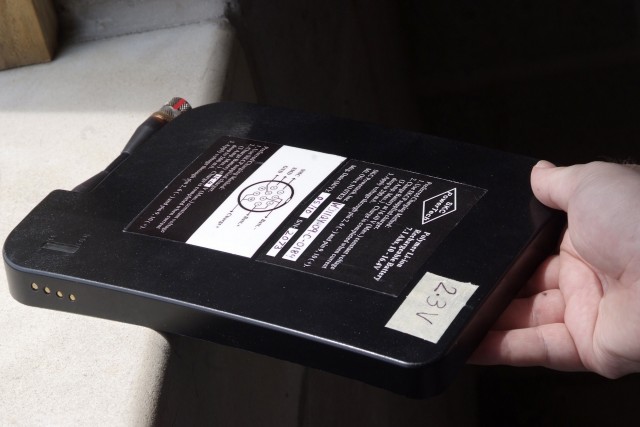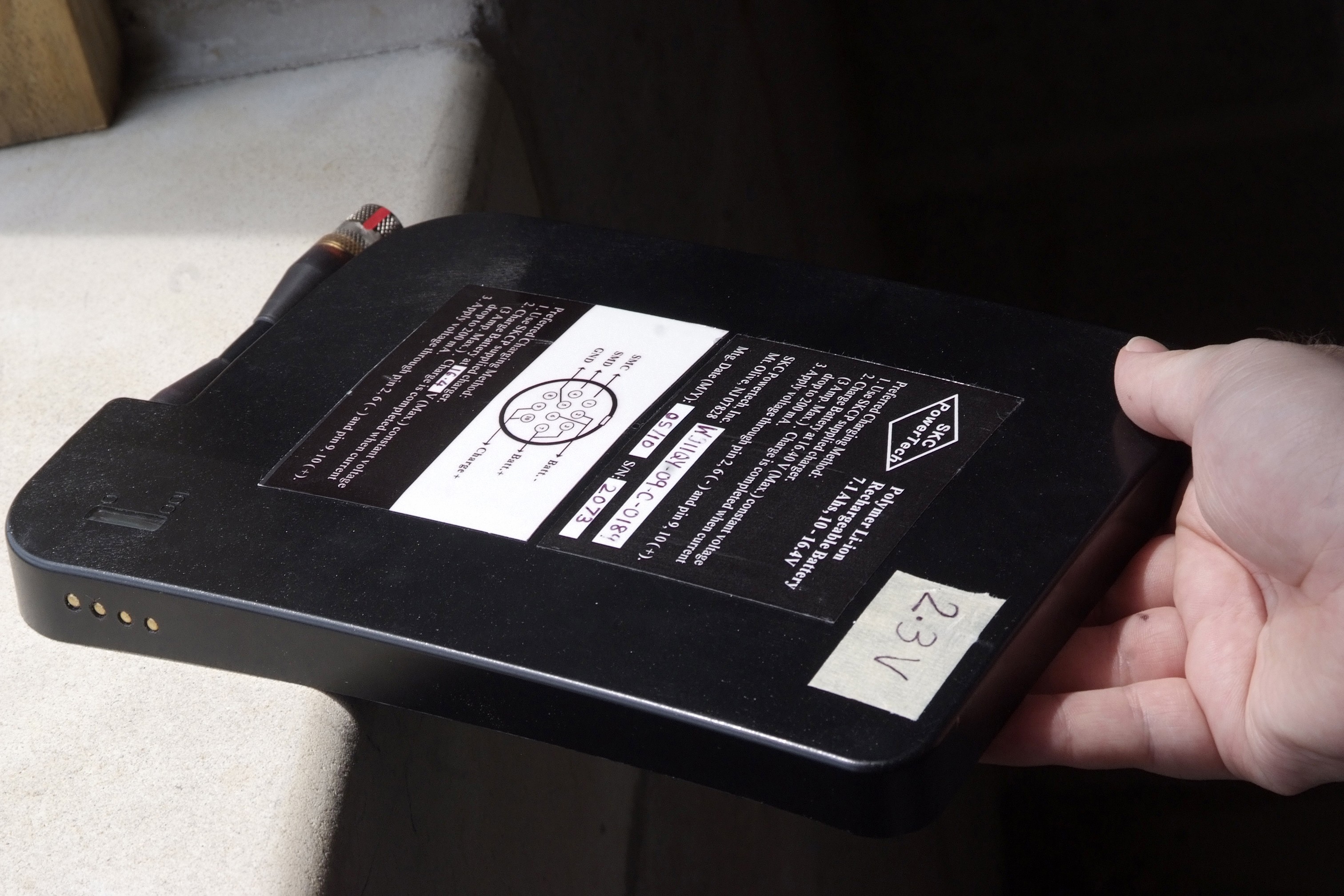FORT MONMOUTH, N.J. -- The U.S. Army is leveraging its annual C4ISR integrated capabilities event at Fort Dix to assess a contoured, rechargeable battery that will allow the Soldier to be more agile in the battlefield.
"The Soldier Conformal Rechargeable battery has a thin profile designed to match the contour of the Soldier's ballistic protective plate. It powers integrated Soldier systems and sensors for 24-hours without needing to be replaced or recharged," said George Au, an engineer in the Army Power division of the U.S. Army Communications-Electronics Research, Development and Engineering Center - or CERDEC.
When used in conjunction with a fuel cell, the battery can support missions up to 72 hours before needing to be recharged, Au said.
The SCR battery is part of the Dismounted Soldier Power effort, a joint Army Technology Objective, or ATO, shared by three organizations within the U.S. Army Research, Development and Engineering Command: CERDEC, the Army Research Laboratory and the Natick Soldier Research, Development and Engineering Center, or NSRDEC.
The ATO seeks to provide energy independence on the battlefield while reducing the weight of the Soldier's load, increasing his mobility and extending mission times.
The importance of the SCR battery lies in its design, which allows for easier execution of typical ground combat maneuvers, said Frank Ashe, an engineer with NSRDEC.
"It allows faster entry and egress through small openings, and it improves Soldier balance since center of mass has been brought closer to the torso. It also frees up more real estate on the load-bearing vest for other items," Ashe said.
In addition to assessing safety, durability, reliability and software compatibility, RDECOM is looking to integrate the SCR battery with NSRDEC Soldier Domain Technologies during Command, Control, Communications, Computers, Intelligence, Surveillance and Reconnaissance On-the-Move Event 2010, or C4ISR OTM E10.
This is the third year that SCR batteries have been brought to C4ISR OTM for assessment, and the final year prior to its scheduled transition to Product Manager Soldier.
"C4ISR OTM gives our technologies, power included, a venue to properly test and demonstrate the technology readiness of the product in a relevant field environment," Ashe said.
C4ISR OTM is a research and development program within CERDEC that evaluates the technical applications and maturity for emerging networking, sensors and C4ISR-enabling platforms on a year-round basis. It provides science, technology and engineering support to mitigate risk for Army Technology Objectives and supports milestone decisions for programs of record.
C4ISR OTM Event 2010 is aligned with the Army Network Modernization strategy and is exploring leap-ahead capabilities that can augment and enhance the foundation of network modernization while identifying technology acceleration opportunities into the current force.
Power source assessments like the SCR fall in line with the overarching objectives of C4ISR OTM E10, said Jason Sypniewski, chief of the C4ISR OTM Integrated Event, Design and Analysis branch.
"One of our objectives is to support Department of Army ATO guidance in power and energy - especially as it pertains to the system-of-systems construct. A system-of-systems architecture consists of various C4ISR systems that need to interact reliably and consistently, so it's important to have a robust power source. Increased 'up time' in a system-of-systems equates to sustained continuity of operations," Sypniewski said.
"Weight and agility are key variables that need to be assessed within a system-of-systems because the architecture spans all echelons, from the Joint Task Force down to the tactical edge. Improvements in these areas are paramount to enabling the Soldier to effectively and efficiently execute the mission," Sypniewski said.
The SRC battery assessments at C4ISR OTM will conclude at the end of July, and a Limited User Test is scheduled for November. C4ISR OTM E10 is scheduled to continue execution through Sept. 2, at Fort Dix, N.J.
To learn more about C4ISR OTM, visit http://bit.ly/agO7nR or contact CERDEC Public Affairs, (732) 427-1594. Be sure to follow CERDEC on Twitter and Facebook for more information concerning events taking place throughout C4ISR OTM E10.
Related Links:
U.S. Army Communications-Electronics Research, Development and Engineering Center




Social Sharing